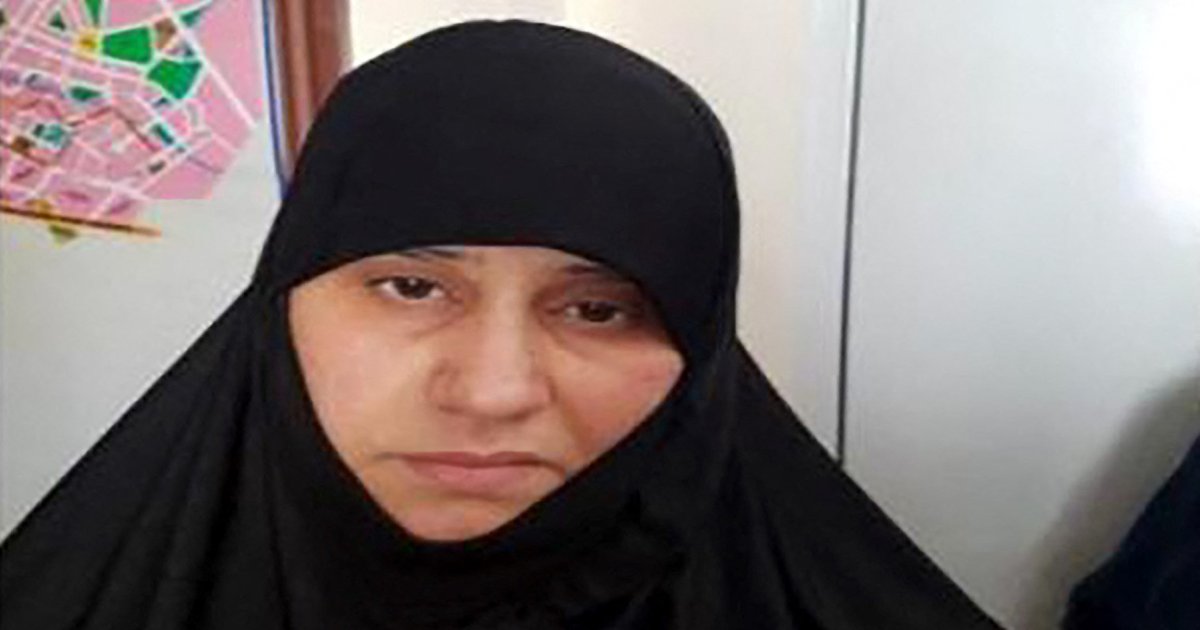A court in Iraq on Wednesday sentenced one of the widows of Abu Bakr al-Baghdadi to death. Her late husband was the leader of the Islamic State (ISIS) terrorist organization who was was killed during a U.S. operation in 2019.
The woman was convicted of holding captive and enslaving Yazidi girls and young women in her home in the city of Mosul and of being a member of a terrorist organization. The ruling must receive approval from the appeals court before becoming final.
While the court did not reveal her identity, according to Arab press reports, the woman’s name is Asma Fawzi Mohammad, also known as Umm Hudaifa.
Israeli media outlet Ynet noted that according to estimates, al-Baghdadi had three wives. Mohammad is believed to have married him in 1999, becoming his first wife.
Mohammad was captured in Turkey in 2018 and extradited to Iraq along with her children.
During ISIS’s 2014 campaign of conquests, the Islamic terrorist group committed genocide against the Yazidi minority and abducted thousands of young women and girls, whom they used as sex slaves.
When the group declared its caliphate in the areas it controlled in Iraq and Syria, the widow was in the Syrian city of Raqqa, which was later considered the de facto capital of the caliphate.
In recent months, while imprisoned in Iraq, Mohammad spoke with several media outlets. In an interview with the BBC, she said that her husband was a criminal who committed horrible acts, and claimed that al-Baghdadi began suffering from “mental problems” after being in a U.S. prison in Iraq, becoming an extremist.
During the interview, the widow acknowledged that a friend of al-Baghdadi’s brought nine Yazidi girls and young women to his home in August 2014. Their ages ranged from 9 to about 30 years old. However, she denied involvement in any of ISIS’s brutal activities and said she felt guilty about it.
However, the father of one of the abductees and the sister of another sued Mohammad in Iraqi court, alleging that she actually collaborated fully with the abuse of the women and girls.
Throughout the interview, Mohammad presented herself as a victim, and recounted her failed attempts to flee and divorce the terrorist leader.
Genocide and ethnic cleansing perpetrated by ISIS against the Yazidis
While the Yazidis have been persecuted for centuries, the most recent massacre suffered by this ethnic group happened in August 2014, when as noted on Nadia’s Initiative, created by well-known Yazidi survivor and activist Nadia Murad, the world witnessed a genocide. Within two weeks, the Iraqi region of Sinjar was overrun by ISIS, which embarked on a campaign to carry out ethnic cleansing against the Yazidis.
The foundation adds that approximately 400,000 Yazidis fled to the neighboring Iraqi Kurdistan region and tens of thousands took refuge on Mount Sinjar, where they were on the brink of starvation. The remaining members of this community, unable to flee, were killed or kidnapped and subjected to horrific acts of violence: slavery, forced labor, torture and rape. ISIS killed an estimated 5,000 Yazidi men and women.
The massacre, Nadia’s Initiative indicates on its website, occurred because ISIS considers Yazidis “infidels” and forced the men to convert to Islam or die. The women, on the other hand, had no choice. They were kidnapped, forced to marry the highest bidder, sexually enslaved and forced to convert to Islam.
The foundation stresses that more than 6,000 women and children were captured by ISIS and nearly 2,800 are still missing today. It adds that sexual violence was used strategically as a weapon of war and the terrorist group’s manuals explained how to traffic Yazidi women. Moreover, ISIS believed that rape would destroy the community from within.
Who are the Yazidis?
The Yazidis are followers of a Middle Eastern religion, which they claim is even older than Judaism, whose roots go back centuries before the Christian era in ancient Persia and resembles the Zoroastrian faith. Yazidis have absorbed various traditions from Sufi Islam and other Mesopotamian cultures.
Like Muslims, Yazidis pray five times a day. In addition, like the Zoroastrians, they maintain the purity of the four elements (earth, water, air and fire). Members of this community believe that God manifests himself in the human body and also in reincarnation.
The Yazidis consider Malak Taus as the alter ego of God, inseparable from him, so therefore Yazidism is monotheistic.
Throughout history, their Muslim neighbors have seen the Yazidis as “devil-worshippers,” so they have had to live constantly on the run, and in recent years have settled between the autonomous region of Kurdistan and the Sinjar and Shekhan mountains, both in the Iraqi province of Nineveh.
The Yazidi community in Iraq has about half a million members, representing less than 2% of the Iraqi population of over 40 million. Other large communities live in exile in Syria, Armenia and Germany.
According to some studies, the number of Yazidis who were killed over the centuries could reach 20 million. Despite the persecutions suffered since the Ottoman Empire and so many centuries of martyrdom, they have never lost their faith or their sense of identity.



